Magical Surfaces: The Uncanny in Contemporary Photography focuses on two contrasting generations. Beginning in the 1970s, Stephen Shore and Joel Sternfeld travelled America photographing things that are so ordinary, yet so odd, that they transcend the familiar to become surreal. And alongside them are five Europeans, 20 or so years younger who, by and large, seem glued to their computers.
Joel Sternfeld’s McLean, Virginia, December 1978 (main picture) is one of my all-time favourites. In the background is a house on fire; flames are spurting from the roof. Luckily, a crane is in place to rescue the occupants, but the fireman has gone AWOL. Instead of saving lives, he is choosing a pumpkin from the nearby farm stall. Squashed pumpkins litter the foreground; the same bright orange as the fireman’s jacket and the flames they seem to be part of the unfolding tragedy, as though presaging disaster. Since photography stops time, we will never know the outcome; this inexplicable event will endlessly remain an enigma and retain its fascination.
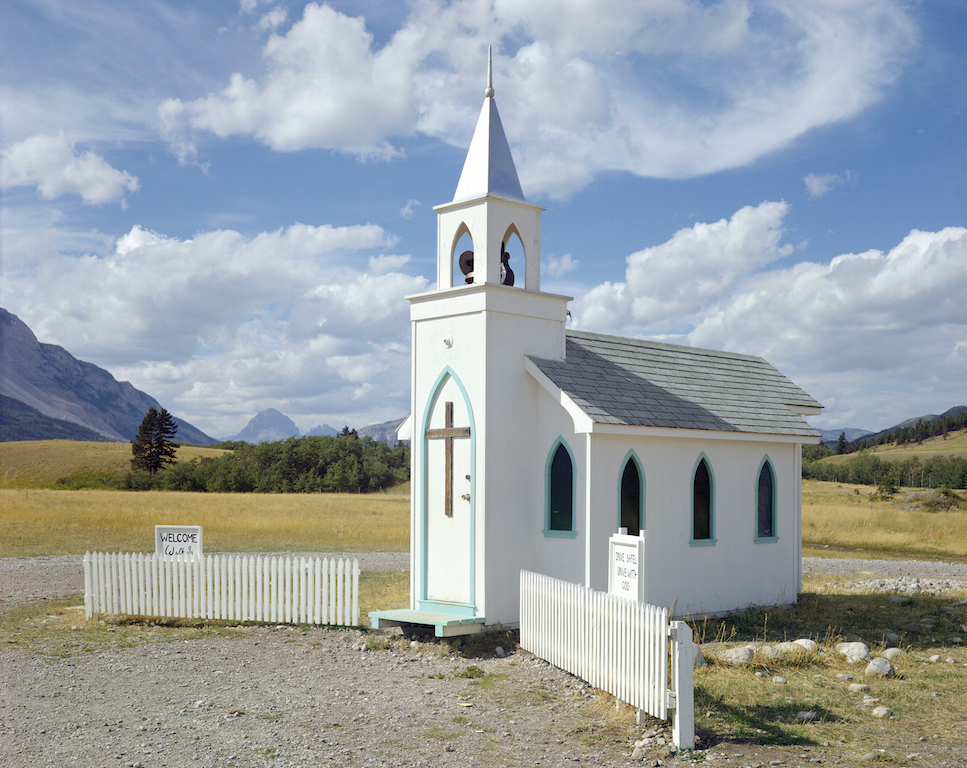 In another photograph, an elephant is holding up the traffic. Someone is hosing down the hapless creature, which has collapsed in the middle of a country road; but the sheriff is at hand, so this bizarre emergency may yet be resolved.
In another photograph, an elephant is holding up the traffic. Someone is hosing down the hapless creature, which has collapsed in the middle of a country road; but the sheriff is at hand, so this bizarre emergency may yet be resolved.
Knowing that these scenes were witnessed rather than fabricated is crucial to our enjoyment of the photographs. Even finding out that the fire was part of an exercise and the elephant a circus runaway fails to destroy the magic. If we were to discover that the images had been manipulated or digitally created, though, their value would be cancelled. Photography’s link to actuality is of primary importance, I think; sever that connection and you are in danger of losing the plot.
The brilliance of Sternfeld’s pictures comes from the unlikely narratives they record; by contrast, Stephen Shore specialises in stillness and the absence of people and events. With its slanting sunlight and deep shadows, Holden Street, North Adams, Massachusetts ... 1974 looks like a film set waiting for the director to shout “action” and some extras to scurry round the corner.
The white painted church in Bellevue, Alberta (pictured above right: August 21,1974) is so small that it looks like a model. Since there’s no garden or courtyard, the picket fence flanking the doorway serves no purpose other than to aggrandise the entrance and create a sense of place. Painted blue and white, it chimes with the clouds scudding across the sky, yet appears completely out of place. Who put this little box in the middle of nowhere and why? Shore is like an anthropologist looking for clues to explain some alien culture, or a philosopher ruminating on our place in the greater scheme of things.
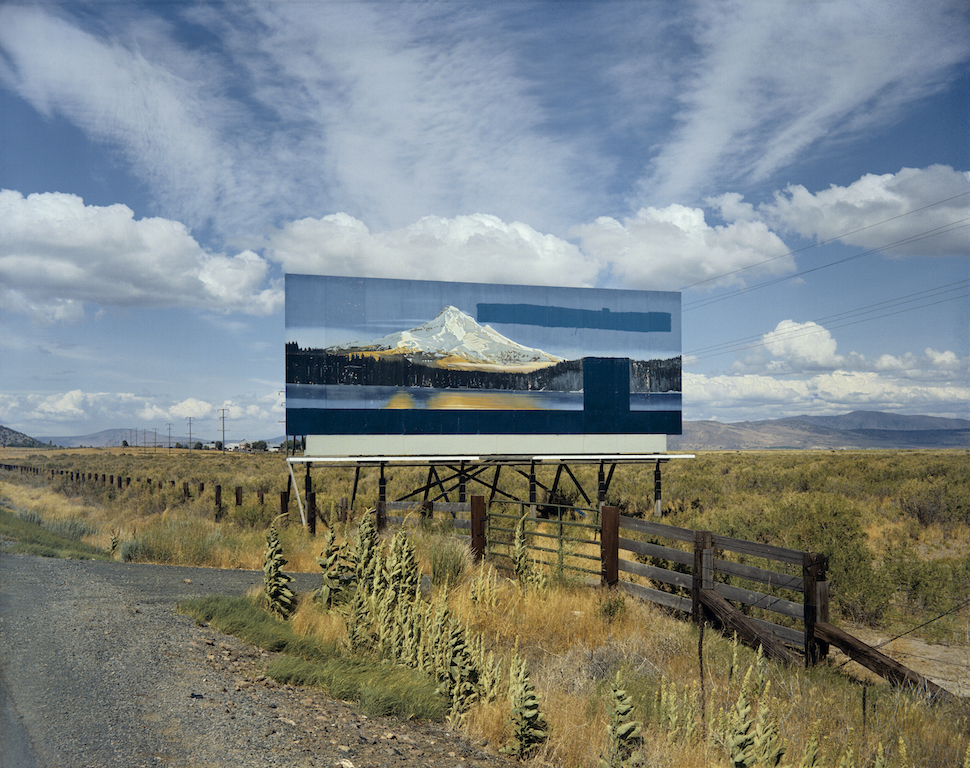 A billboard has been erected beside Highway 97 (pictured above: US 97, South of Klamath Falls, Oregon, July 21, 1973) showing a snow-clad mountain reflected in the still waters of a blue lake. But the slogans have been painted out so its not clear why this picture of a rural idyll has been erected here, especially as it compares unfavourably with the surrounding landscape; the sky above and the grasses beneath are so much more dramatic and palpable than the billboard scene. Shore seems to be making a point about the paucity of human imagination when compared with the real thing; the joke, of course, is that the landscape being compared with the billboard is itself an image – his photograph.
A billboard has been erected beside Highway 97 (pictured above: US 97, South of Klamath Falls, Oregon, July 21, 1973) showing a snow-clad mountain reflected in the still waters of a blue lake. But the slogans have been painted out so its not clear why this picture of a rural idyll has been erected here, especially as it compares unfavourably with the surrounding landscape; the sky above and the grasses beneath are so much more dramatic and palpable than the billboard scene. Shore seems to be making a point about the paucity of human imagination when compared with the real thing; the joke, of course, is that the landscape being compared with the billboard is itself an image – his photograph.
Elger Esser (Germany) seems to have been looking at paintings. We are gazing across the Venetian lagoon from an inlet on the deserted island of Poveglia that once housed an asylum. The view is framed by two banks, one wooded, the other bearing the remains of an empty building. Suffused in golden light, this elegiac scene is reminiscent of a painting by Turner or Claude. The delicate light may have been digitally enhanced, but who cares when its fragile beauty seems to encapsulate something of the island’s melancholy history.
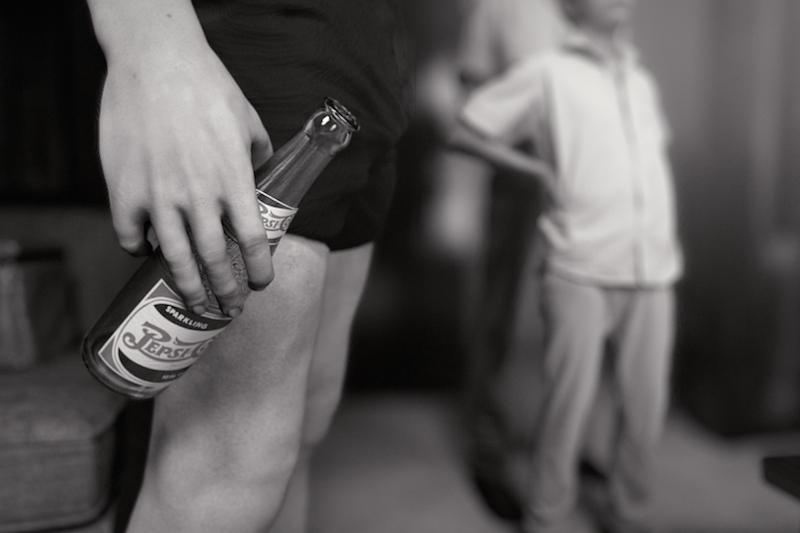 If you’ve ever climbed a mountain and marvelled at the blueness of the distant hills and noticed how the dwindling light has the infinite subtlety of water colour washes, you will not be impressed by Jörg Sasse’s (Germany) attempts to duplicate the effect in an ink jet print. Distance has been collapsed; the nearby range is as uniformly black as a cardboard cut-out and the layered space beyond is more like a sequence of theatre flats than a mountain range receding into the distance.
If you’ve ever climbed a mountain and marvelled at the blueness of the distant hills and noticed how the dwindling light has the infinite subtlety of water colour washes, you will not be impressed by Jörg Sasse’s (Germany) attempts to duplicate the effect in an ink jet print. Distance has been collapsed; the nearby range is as uniformly black as a cardboard cut-out and the layered space beyond is more like a sequence of theatre flats than a mountain range receding into the distance.
Julie Monaco (Austria) also fakes it; cs_02/4, 2005, is an apocalyptic view of lowering clouds swirling above a boiling sea. The image is not very large yet it has the breadth and drama of a painting by John Martin, the English romantic who enjoyed terrifying viewers with fire and brimstone depictions of the ungodly being dispatched by divine wrath. Yet a deep sense of “so what?” infuses my response. There’s no inherent meaning in the technical trickery.
David Claerbout (Belgium) photographs traffic jams from various angles, then inserts shots of people taken in the studio. Police, fire fighters, drivers and passengers watch and wait, while you wonder why. Whereas Sternfeld’s narratives encourage contemplation of the human condition, these theatrical scenes provoke little speculation beyond the most obvious.
In 1956 Alfred Wertheimer took a photo of Elvis as a gauche young man in boxer shorts. With this photo as a starting point, Claerbout takes us on a 3D tour of Elvis’s body using skin fragments sampled from hundreds of photographs and knitted into a continuum. If the initial photograph is already creepy, this video enlargement is as unreal as a journey round a waxwork (pictured above left: still from KING, after Alfred Wertheimer's 1956 picture of a young man named Elvis Presley, 2016). My advice to the younger generation is to get out more.
- Magical Surfaces: The Uncanny in Contemporary Photography at Parasol Unit until 19 June

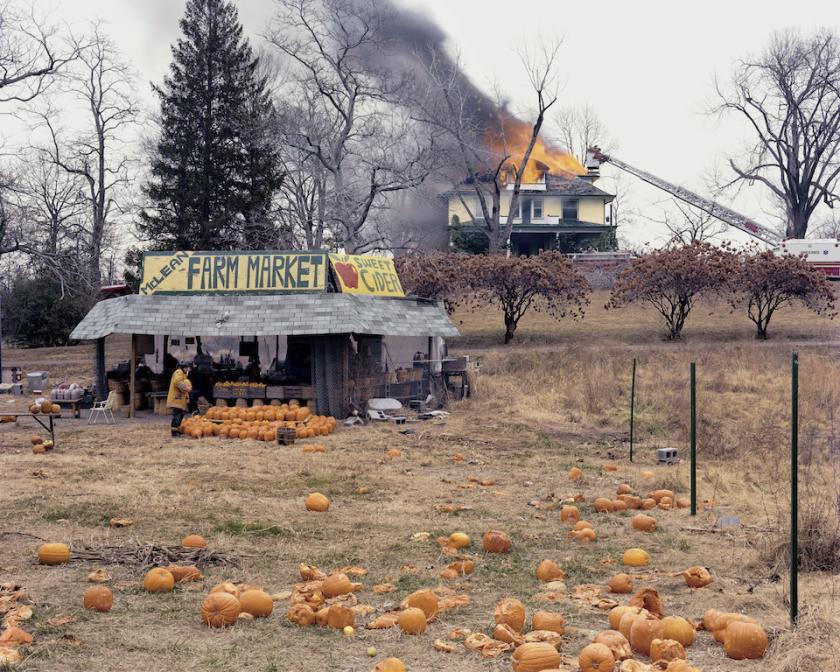

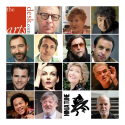

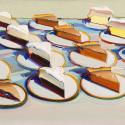


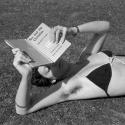
![SEX MONEY RACE RELIGION [2016] by Gilbert and George. Installation shot of Gilbert & George 21ST CENTURY PICTURES Hayward Gallery](/sites/default/files/styles/thumbnail_125_x_125_/public/mastimages/Gilbert%20%26%20George_%2021ST%20CENTURY%20PICTURES.%20SEX%20MONEY%20RACE%20RELIGION%20%5B2016%5D.%20Photo_%20Mark%20Blower.%20Courtesy%20of%20the%20Gilbert%20%26%20George%20and%20the%20Hayward%20Gallery._0.jpg?itok=3oW-Y84i)
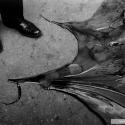
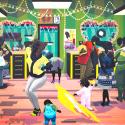


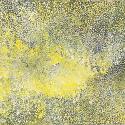
Add comment